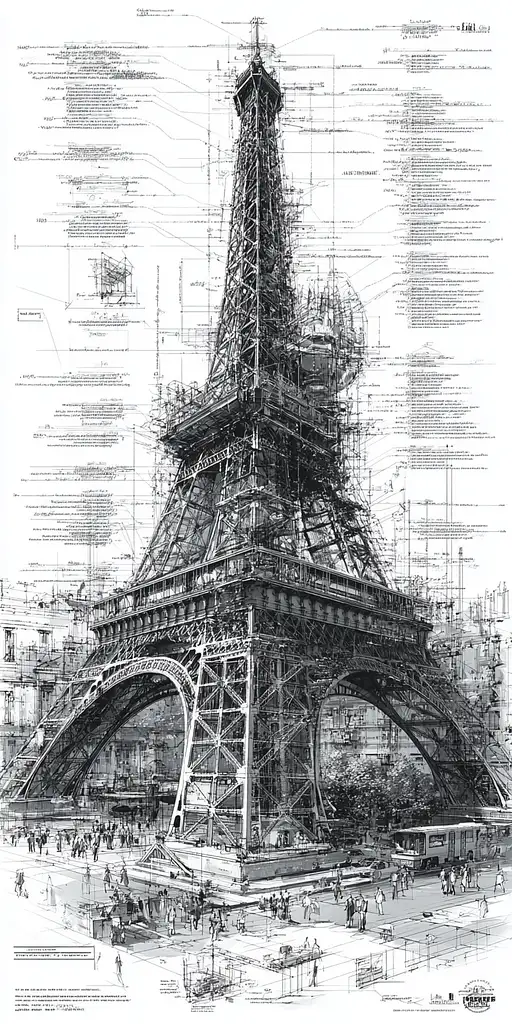9 months ago
Set against an endless expanse of desert, the colossal automaton strides across the horizon, its immense form towering over the landscape while leaving much of the frame open to convey its overwhelming size. At a distance, its silhouette breaks through low-hanging clouds at 1,000 meters, emphasizing its staggering 4,000-foot height. The machine moves steadily, one leg caught mid-stride, lifted high as cascades of sand pour from its immense foot, creating swirling eddies of dust far below. Its grounded legs leave deep craters in the desert, visible even from this distant view, while the trembling earth sends visible ripples across the dunes.
The automaton’s four massive legs are skeletal and mechanical, each a latticework of colossal pistons, cables, and ancient, corroded plating. Despite its distance, the details of its weathered surface are visible: rust streaks running down its joints, broken sections exposing internal mechanisms, and deep scars left by untold centuries of wear. Its torso rises like a fortress, uneven and asymmetrical, with jagged outcroppings, massive exhaust vents spewing steam, and entire sections bristling with exposed machinery.
Above the automaton, airships tethered by thick, swaying cables float alongside it, their weathered envelopes bulging against the desert winds. These vessels, far smaller in scale but still large by human standards, bob and shift as they carry supplies and maintenance crews to the machine. Smaller drones flit between the airships and the automaton, their lights blinking faintly as they zip across the sky.
On its back, the automaton supports a distant but sprawling city. Even from this far, the city’s intricate design is visible—towers and spires rise unevenly, linked by delicate bridges and suspended pathways. Tiny streams of light flicker across the city’s surface, marking the movements of vehicles and machinery. Trails of smoke and mist cascade down its sides, mingling with the clouds that cling to its upper body. The faint hum of activity is palpable, amplified by the unceasing movement of the automaton itself.
The scene is dominated by the vast desert, stretching outward in golden ripples of sand broken only by jagged outcrops of rock and the faint shapes of ruined structures buried in the dunes. In the foreground, caravans of tiny figures and vehicles scatter, barely perceptible against the immense scale of the automaton. Dust storms trail far behind its legs, creating a hazy backdrop that swallows portions of the horizon.
Above, the late-afternoon sky is layered with fiery streaks of orange and purple, clouds glowing faintly as they part to accommodate the automaton’s towering frame. The interplay of light and shadow accentuates its enormity, with its upper sections catching the sun’s last rays while its lower half fades into shadow and dust. The atmosphere is thick with the sounds of grinding metal, distant tremors, and the hum of engines, creating a sense of motion and life that fills the frame without overwhelming it.
The automaton’s presence dominates the scene, but its distance allows the scale of the environment—airships, desert, and sky—to emphasize its true immensity. It strides forward like a titan, a walking world whose slow, deliberate march carries an ancient city and its tethered fleet across the endless expanse


